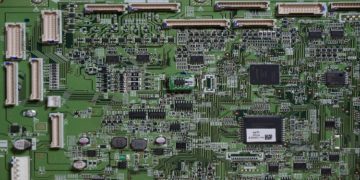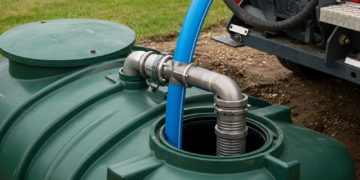In agriculture, time is more than money it’s yield, sustainability, and survival. Every hour saved in the field can mean healthier crops, lower costs, and greater profits. Yet, farmers today face one of the toughest challenges of modern agriculture: labor inefficiency. With rising wages, seasonal worker shortages, and unpredictable weather patterns, even well-managed farms struggle to get the most out of their workforce.
That’s where Farm Management Software (FMS) steps in, transforming the way farms plan, assign, monitor, and analyze labor. What used to take days of manual coordination now happens in minutes, thanks to technology that brings visibility, automation, and accountability to every operation.
Role of Farm Management Software
Farm Management Software is a digital platform designed to streamline day-to-day farm operations. It acts as a central command system, integrating crop planning, labor scheduling, machinery usage, financial records, and inventory management all within a single, cloud-based dashboard.
Instead of scattered spreadsheets, paper logs, or verbal communication, FMS enables real-time collaboration between managers, field workers, and equipment operators. It also connects with IoT devices, GPS trackers, and mobile apps to provide a live snapshot of field performance and workforce activity.
Ultimately, FMS turns farm management from a reactive process into a data-driven operation, where every task, input, and person is tracked and optimized for efficiency.
Labor Efficiency Challenges in Modern Farming
Before exploring the solution, it’s essential to understand the problem. Labor inefficiency in farming typically comes from:
- Manual planning: Relying on experience rather than data to assign workers and tasks.
- Poor communication: Misunderstandings between supervisors and field workers.
- Time tracking issues: Inaccurate recording of hours and tasks completed.
- Unbalanced workload: Some workers are overutilized while others remain idle.
- Limited visibility: Managers can’t monitor performance across different sites in real time.
In a sector where margins are thin, even small inefficiencies quickly add up. Farm Management Software resolves these pain points by aligning human effort with precision scheduling, measurable performance, and clear communication.
Centralized Task Planning and Assignment
Traditionally, planning labor tasks involves endless calls, paper checklists, and guesswork. Farm Management Software automates this process through centralized planning and digital scheduling.
Farm managers can create daily or weekly plans, assign workers to specific crops, fields, or machinery, and set task deadlines all from one dashboard.
The result?
- Fewer idle hours: Workers know exactly what to do and when.
- Better prioritization: High-value tasks (like irrigation or pesticide spraying) get scheduled first.
- Reduced supervision time: Managers don’t need to micromanage the software keeps everyone aligned.
This level of organization drastically minimizes downtime and ensures that every worker hour directly contributes to productivity.
Real-Time Labor Monitoring and Performance Tracking
One of the biggest advantages of FMS is real-time visibility. Through mobile apps and IoT integration, farm managers can track who is working, where they are, and what they are doing at any moment.
GPS-enabled check-ins ensure accurate time and attendance records. For example, when workers enter or exit a specific field, the system automatically logs their activity. Supervisors can review progress live and make instant adjustments, redirecting labor to priority areas as conditions change.
This data-driven monitoring not only eliminates “dead time” but also improves accountability. Workers are more focused when performance metrics are transparent and visible.
Over time, the data collected builds a record of efficiency showing which teams, methods, or times of day deliver the best results.
Automated Payroll and Labor Cost Analysis
Manual payroll processing is one of the most time-consuming aspects of farm management. Errors in attendance tracking or piece-rate calculations can cause frustration for both managers and workers.
Farm Management Software automates payroll by linking time tracking directly with wage calculations. It can:
- Automatically compute pay based on hours worked or tasks completed.
- Track overtime and seasonal labor variations.
- Generate reports for compliance and audits.
With accurate, automated payroll, farms reduce administrative workload and maintain transparent relationships with employees.
More importantly, managers can analyze labor cost trends, identifying high-cost activities and optimizing future workforce allocation.
Seamless Communication Between Managers and Field Workers
Communication gaps often lead to wasted time and repeated effort. For example, if an irrigation task is completed but not logged, another team may repeat the same job.
Farm Management Software eliminates these silos through built-in communication tools. Managers can send instant messages, share task updates, or issue alerts through mobile devices. Workers, in turn, can log task completion, report issues, or upload photos directly from the field.
This two-way communication ensures that everyone stays informed and that decisions are made based on real-time updates, not assumptions.
Optimizing Equipment and Resource Usage
Labor efficiency isn’t just about managing people, it’s about how people interact with tools and machinery. FMS connects labor planning with equipment scheduling to ensure that tractors, sprayers, and irrigation systems are used optimally.
For instance:
- Workers assigned to a field automatically get matched with available machinery.
- Equipment maintenance reminders prevent costly breakdowns during critical operations.
- Usage logs help track machine hours, fuel consumption, and productivity.
This synergy between labor and equipment management reduces idle machine time and prevents overuse, leading to lower operational costs and better performance.
The Future of Farm Labor Management
As agriculture continues its digital transformation, the role of software in labor efficiency will only grow. The next generation of FMS platforms will integrate AI and machine learning to:
- Predict labor requirements before planting seasons.
- Automate task scheduling based on weather forecasts.
- Recommend resource allocation to balance human and machine work.
- Analyze long-term efficiency patterns for strategic workforce planning.
In this future, farms won’t just manage labor, they’ll orchestrate productivity through intelligence and automation.
Conclusion
Labor is the backbone of every successful farm. However, in today’s rapidly evolving agricultural landscape, traditional management methods can no longer keep pace with the increasing complexity of modern operations.
Farm Management Software bridges that gap, transforming scattered, manual processes into a synchronized system of tasks, data, and results. By enabling smarter planning, real-time monitoring, seamless communication, and integrated analytics, it empowers farms to do more with less.
In short, Farm Management Software doesn’t just manage labor, it multiplies its impact. And as agriculture continues to evolve, digital tools like FMS and ERP-integrated systems will become essential allies in building more productive, resilient, and profitable farms.












































































